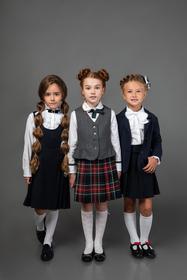High School for Recording Arts is a public charter high school located in the Midway neighborhood of Saint Paul, Minnesota, United States. The school pioneered the concept of connecting with at-risk students through a hip-hop music program, hence the nickname "Hip-Hop High." There are no tuition fees.
Serving 214 students in grades 9-12, High School For Recording Arts ranks in the bottom 50% of all schools in Minnesota for overall test scores (math proficiency is bottom 50%, and reading proficiency is bottom 50%).
The percentage of students achieving proficiency in math is ≤10% (which is lower than the Minnesota state average of 46%). The percentage of students achieving proficiency in reading/language arts is 21-39% (which is lower than the Minnesota state average of 51%).
The student-teacher ratio of 24:1 is higher than the Minnesota state level of 13:1.
Minority enrollment is 96% of the student body (majority Black), which is higher than the Minnesota state average of 39% (majority Black and Hispanic).
Quick Facts (2025-26)
- School Type: Charter School
- Grades: 9-12
- Enrollment: 214 students
- Student-Teacher Ratio: 24:1
- Minority Enrollment: 96%
- Graduation Rate: 30-34% (Btm 50% in MN)
- Overall Testing Rank: Bottom 50%
- Math Proficiency: ≤10% (Btm 50%)
- Reading Proficiency: 21-39% (Btm 50%)
- Science Proficiency: <50% (Top 1%)
- Source: National Center for Education Statistics (NCES), MN Dept. of Education
Top Rankings
High School For Recording Arts ranks among the top 20% of public schools in Minnesota for:
Category
Attribute
Percent Eligible For Free Lunch
School Overview
High School For Recording Arts's student population of 214 students has declined by 23% over five school years.
The teacher population of 9 teachers has declined by 43% over five school years.
School Type
Grades Offered
Grades 9-12
(No virtual instruction)
(No virtual instruction)
Total Students
214 students
Gender %
Total Classroom Teachers
9 teachers
Year Founded
1996
School Calendar
Last Day of School
Fri. Jun 5, 2026
School Motto
The mission of HSRA is to provide youth the opportunity to achieve a high school diploma through the exploration and operation of the music business and other creative endeavors.
School Rankings
High School For Recording Arts ranks within the bottom 50% of all 1,773 schools in Minnesota (based off of combined math and reading proficiency testing data).
The diversity score of High School For Recording Arts is 0.49, which is less than the diversity score at state average of 0.59. The school's diversity has stayed relatively flat over five school years.
Overall Testing Rank
#1631 out of 1773 schools
(Bottom 50%)
(Bottom 50%)
Math Test Scores (% Proficient)
≤10%
46%
Reading/Language Arts Test Scores (% Proficient)
21-39%
51%
Science Test Scores (% Proficient)
(20-21)<50%
45%
Student-Teacher Ratio
24:1
13:1
American Indian
n/a
2%
Asian
n/a
7%
Hispanic
15%
12%
Black
69%
12%
White
4%
61%
Hawaiian
n/a
n/a
Two or more races
12%
6%
All Ethnic Groups
Graduation Rate
30-34%
84%
Participates in the National School Lunch Program (NSLP)
Yes
Eligible for Free Lunch
82%
36%
Eligible for Reduced Lunch
4%
7%
School Statewide Testing
School District Name
Source: National Center for Education Statistics (NCES), MN Dept. of Education
Profile last updated: 02/09/2025
Frequently Asked Questions
What is High School For Recording Arts's ranking?
High School For Recording Arts is ranked #1631 out of 1,773 schools, which ranks it among the bottom 50% of public schools in Minnesota.
What schools are High School For Recording Arts often compared to?
High School For Recording Artsis often viewed alongside schools like Global Arts Plus Upper, Global Arts Plus Lower by visitors of our site.
What percent of students have achieved state testing proficiency in math and reading?
≤10% of students have achieved math proficiency (compared to the 46% MN state average), while 21-39% of students have achieved reading proficiency (compared to the 51% MN state average).
What is the graduation rate of High School For Recording Arts?
The graduation rate of High School For Recording Arts is 30-34%, which is lower than the Minnesota state average of 84%.
How many students attend High School For Recording Arts?
214 students attend High School For Recording Arts.
What is the racial composition of the student body?
69% of High School For Recording Arts students are Black, 15% of students are Hispanic, 12% of students are Two or more races, and 4% of students are White.
What is the student-teacher ratio of High School For Recording Arts?
High School For Recording Arts has a student ration of 24:1, which is higher than the Minnesota state average of 13:1.
What grades does High School For Recording Arts offer ?
High School For Recording Arts offers enrollment in grades 9-12 (No virtual instruction).
What school district is High School For Recording Arts part of?
High School For Recording Arts is part of High School For Recording Arts School District.
In what neighborhood is High School For Recording Arts located?
High School For Recording Arts is located in the Union Park neighborhood of Saint Paul, MN. There are 5 other public schools located in Union Park.
School Reviews
Review High School For Recording Arts. Reviews should be a few sentences in length. Please include any comments on:
- Quality of academic programs, teachers, and facilities
- Availability of music, art, sports and other extracurricular activities
Recent Articles

Public School Open House & Enrollment Season Guide
A parent-focused guide to the public school open house and enrollment season, with expert questions, timelines, and decision tips.

School Supply Budget 2026: Fees, Books, Tech Costs
School Supply Budget 2026 guide for parents, covering fees, textbooks, technology, and hidden extras to plan ahead.

Education Funding in America (2025 Update)
Comprehensive 2025 update on public school funding in America, new federal and state policies, per-pupil spending, and equity challenges.





